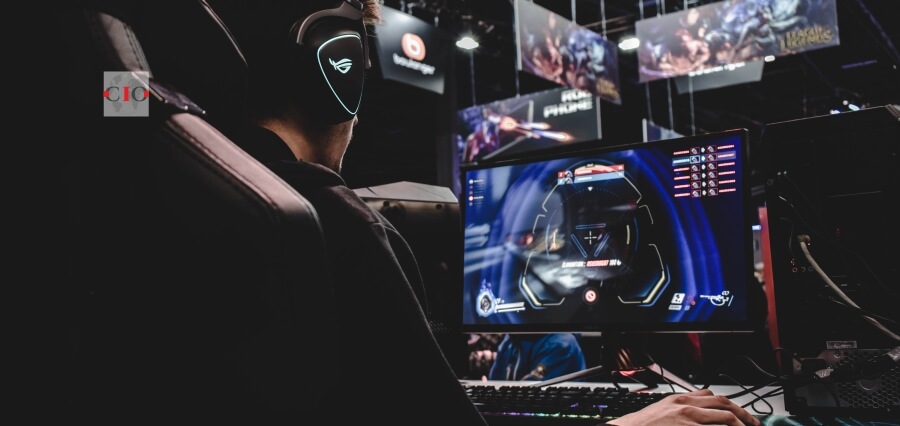In recent times, the culture of technology has introduced its advancements in every arena of life. It has evolved into all sectors of our world including the gaming sector too.
Back then, it was more about having leisure time while playing video games. Such games would usually include car and bike racing games, juggling through obstacles while winning points. Or playing the famed game of Prince of Persia which was about countering the opponent and saving the princess at the end.
The worldwide gaming industry is on the rise. People from every age group want to have a video game system or entertainment unit and flaunt it among other peers. Little did we know, there’s so much more than playing games for fun. It is about unique and memorable characters and exciting game incentives.
Can you imagine that the game experience, the feel of adventure, visuals, and overall entertainment quotient can be taken to the next level?
It is dream come true for many to immerse into the game environment while playing, which is what virtual reality (VR) technology is all about.
A realistic and enticing imitation of a three-dimensional environment is Virtual Reality. Objects and scenes appear to be real, making the user feel they are highly immersed in the VR surroundings. This experience is perceived through a device called a VR headset.
This technology has paved its path through making the gaming experiences even better. It gives more definitive user expectations to the next-gen games. It brings huge developments in a user-friendly interface. Momentum for next-gen gaming hardware had increased in the consumer entertainment industry.
Let’s dive in and learn how VR has changed the gaming experience:
Uninterrupted Immersive Gaming
Virtual Reality aims to blend our physical environments and virtual worlds. Gaming technology has always been used from an external perspective, while the hardware is an accessory part of the physical self. Gamers can use their five senses and manipulate the surroundings using the entire body than just the controller.
The key to the success of next-gen gaming is the removal of obstacles in front of gamers like unnecessary buttons, actions, or distracting visuals in between the games. Devices could become lightly weighted that are made up of the lightest materials. Users will be able to jump immediately into VR’s experience without tutorials, manuals, or even the game itself guiding players while using it.
Insightful And Stunning VR for All
With ever-evolving times, the gaming experience leaped from poor ergonomics of the controller to a slow 8-bit processor to bulky software that doesn’t always serve up to the mark. Poor incorporation of software and hardware is why Virtual Boy failed when it was released for being too big of a surge for gamers.
Narrating the old time’s hassles to just assemble and play the games does bring a lot of laughs. Mario and Tennis being the glorified games of 90s were played using a VR headset was a task in itself. All age group consumers have experienced the wavelength of gaming experience which has progressed with time.
Top Notch Qualitative Methodologies
Profound interactions will be one of the top qualitative methodologies in virtual reality. Its understandings will advance beyond multi-sensory and socially shared interactions, gamers have in the physical world. These virtual environments will share the same attributes as that in the physical world, which cannot be evaluated easily. It could be done with learnability, proficiency along with efficacy that could be felt on the mobile phone.
Features like cognitive walk-throughs and experimental evaluations are one of the few methods used to collect data with gamers at an emotional level. Gamers permit us to explore new worlds by enhancing creativity and solving complex problems in ways, we never thought was possible.
The Future of Virtual Reality in Gaming
The technology with the projected highest potential for growth is Virtual Reality. It will surely be a key to the company’s plans and their spending in this area will only exceed that of the consumer sector. Thus, it is expected that by the year 2030, more than half of the European companies will have VR strategies to aid their businesses.
As with such market demands, VR is more than just leisure, tourism, or marketing which is cost-effective for users. The virtual interface needs improvement to avoid defects like clipping that makes certain solid objects appear as if they can be passed through.
Vast technology companies have already started working on the defects to build headsets that do not require cables and enable images to display in high definition (HD). There is a discussion that mentioned that in the upcoming years gaming is most likely to collaborate with Artificial Intelligence as well.
The latest evolutions with the 5G network have opened gateways to provide interesting scenarios for VR. It aims to allow more devices and a large community of users to be connected altogether. Ongoing latency will make it possible for consumers to receive images in real-time and appear almost as if they were seeing with their own eyes in the presence of a VR headset.
In a nutshell
In a way, the size of the market in the Virtual Reality gaming industry is pacing with fast growth and with ideas implemented in intriguing and amazing in every sense. All of this implies that Virtual Reality seems to be no longer a sci-fi construct. It is an aspect of our present, and it will lead to advances that will shape the future in the coming years.





